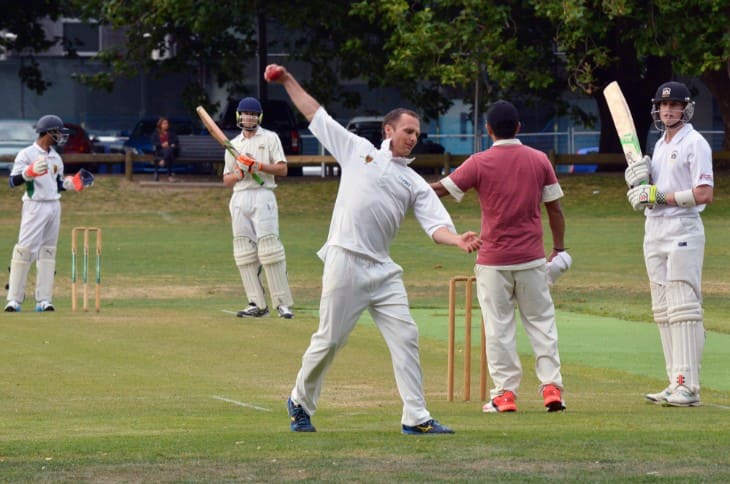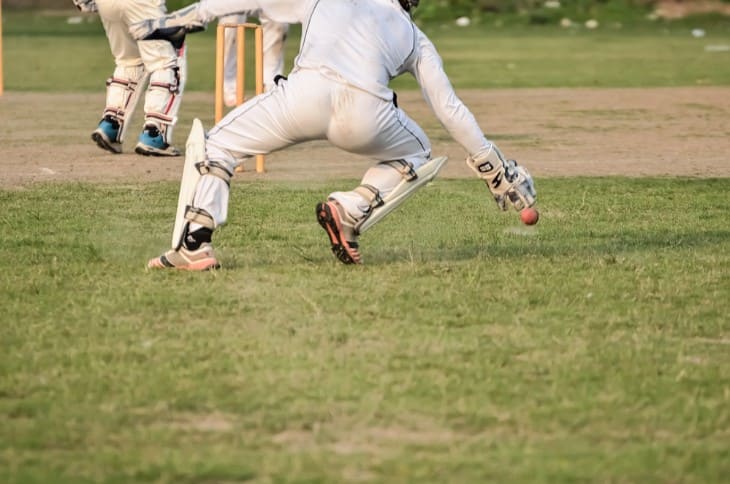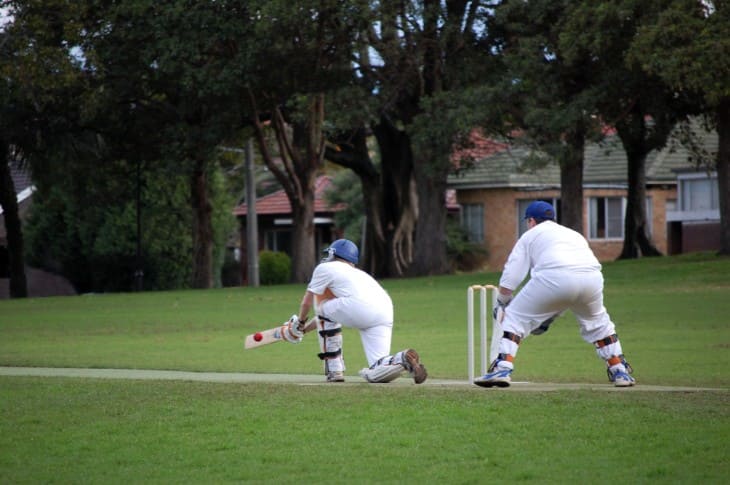- The Origins of 111 Superstition in Cricket
- Famous Cricketers and Their Trysts with 111
- Psychological Impact of the 'Nelson' on Players
- Myth or Reality of 111
- 111 in International Cricket: A Global Perspective
- Media and 111: Amplifying the Superstition
- Coaching Strategies to Combat the 111 Phenomenon
- Fan Culture and the 'Nelson' Number
- Technology's Role in Demystifying Superstitions
- Emerging Trends: Young Players and 111
- Conclusion
The Origins of 111 Superstition in Cricket
Cricket harbours various superstitions, with the 'Nelson' or '111' being one of the most intriguing. This superstition originated in English cricket and is particularly prevalent among English players and fans. The number 111 and its multiples (such as 222, 333) are considered unlucky in this context. The origins of this belief are somewhat murky, but it is widely attributed to Admiral Lord Nelson, a British naval hero. Despite historical inaccuracies, the myth persists that Nelson had 'one eye, one arm, one leg' – a simplification leading to the term 'Nelson' for the score of 111.
This superstition has seeped deeply into the fabric of the game. When the score reaches 111 or its multiples, players often exhibit quirky behaviours, such as lifting their feet off the ground or avoiding certain actions, in an attempt to ward off bad luck. The power of this superstition lies not in its factual accuracy but in its enduring presence in the collective psyche of cricketers and fans alike.
Famous Cricketers and Their Trysts with 111
Numerous renowned cricketers have had notable experiences with the 'Nelson' number, which have only served to reinforce the superstition. For instance, David Shepherd, a respected international umpire from England, famously hopped on one foot whenever the team score reached 111 or its multiples. This idiosyncratic ritual, performed in the middle of a high-stakes game, underlines the extent to which the superstition is ingrained in cricket culture.
Another compelling case involves a legendary Australian cricketer. During an Ashes series, this player was dismissed at 111, which not only cemented his belief in the superstition but also left an indelible mark on his fans and fellow players. Such instances underscore the pervasive nature of this belief, transcending geographical and cultural boundaries within the cricketing world. The influence of these occurrences extends beyond the individual players, contributing to a larger narrative that continues to shape attitudes towards the number 111 in cricket.
Psychological Impact of the 'Nelson' on Players
The Unlucky 111 in cricket not only affects the spectators and commentators but also has a significant psychological impact on the players themselves. The superstition surrounding the 'Nelson' can influence a player’s mindset and performance, especially when the team score hovers around 111. Players often report a heightened sense of anxiety and a change in their playing style, which can lead to uncharacteristic mistakes or overly cautious play. The fear of contributing to a wicket at this score can be particularly burdensome for batsmen.
To understand this impact further, consider the following points:
- Mental Preparedness: Players aware of the superstition may experience additional stress, affecting their concentration and decision-making.
- Behavioural Changes: Some players engage in specific rituals or avoid certain actions to counteract the perceived bad luck associated with 111.
- Team Dynamics: The superstition can also affect team morale and communication, as players collectively navigate the stress associated with the 'Nelson'.
Myth or Reality of 111
A statistical analysis of cricket matches reveals interesting insights into the validity of the 'Nelson' superstition. By examining a large number of international and domestic games, one can determine whether there is an actual increase in the frequency of wickets falling at the score of 111, or whether it is purely a psychological phenomenon. Initial studies suggest that there is no significant statistical difference in wicket frequency at 111 compared to other scores. This indicates that the Unlucky 111 in cricket may be more of a myth perpetuated by anecdotal evidence and cultural lore rather than a reality grounded in statistical fact.
However, the power of this superstition lies not in its statistical backing but in its psychological grip on players and fans. The belief in the 'Nelson' can affect players’ performance, creating a self-fulfilling prophecy where players are more likely to make errors due to the pressure of the superstition. This interplay between belief and performance highlights the complex relationship between psychology and sports performance, particularly in a tradition-rich sport like cricket.

111 in International Cricket: A Global Perspective
The superstition surrounding the Unlucky 111 in cricket transcends national boundaries, impacting players and fans across the cricketing world. In countries like Australia, India, and South Africa, where cricket is fervently followed, the 'Nelson' number carries varying degrees of superstition. In Australia, for instance, the approach towards this superstition is somewhat relaxed, with players and spectators often treating it more as a quirky aspect of the game rather than a serious omen. In contrast, in countries like India, where superstitions are more ingrained in the culture, the 'Nelson' number can be taken more seriously, affecting both players' and spectators' behaviours.
The global nature of this superstition offers a fascinating study into how different cultures interpret and react to the same superstition. It also demonstrates cricket's unique ability to blend sporting prowess with cultural beliefs, creating a rich tapestry of traditions and rituals that are as much a part of the game as the rules themselves.
Media and 111: Amplifying the Superstition
The role of media in perpetuating the belief in the Unlucky 111 in cricket cannot be overstated. Television commentators, newspapers, and online platforms often highlight when a team's score reaches 111, thereby reinforcing the superstition among the wider public. This media attention not only maintains the superstition's presence in the public consciousness but can also amplify its perceived significance.
Key aspects of media influence include:
- Commentary Narratives: Commentators often mention the 'Nelson' when the score reaches 111, sometimes sharing anecdotes or showing reactions of players and fans, which adds to the drama of the moment.
- Social Media: Platforms like Twitter and Facebook see a flurry of activity whenever a score of 111 is reached in a major match, with fans and pundits discussing and often humorously engaging with the superstition.
- Historical Recounts: Media outlets frequently recount past incidents where the 'Nelson' number has coincided with dramatic moments in cricket, further embedding the superstition in cricket lore.
Coaching Strategies to Combat the 111 Phenomenon
Addressing the Unlucky 111 in cricket from a coaching perspective involves a blend of psychological training and practical cricket strategy. Coaches play a crucial role in helping players navigate the superstition, ensuring that it does not adversely affect their performance. One effective approach is to focus on mental conditioning, training players to treat the 'Nelson' like any other number and maintain their usual playing strategy regardless of the score. This includes:
- Mental Resilience Training: Coaches can work with sports psychologists to help players build mental strength and focus, training them to remain unaffected by the superstition.
- Practical Game Strategies: Emphasizing the importance of sticking to the game plan and maintaining consistent performance, regardless of the score.
- De-emphasizing the Superstition: Coaches can actively downplay the significance of the 'Nelson', treating it as a non-issue during team talks and strategy sessions.
Through these strategies, coaches aim to minimize the distraction and psychological impact of the 'Nelson', helping players to focus on their performance and the game at hand.
Fan Culture and the 'Nelson' Number
The superstition of the Unlucky 111 in cricket is deeply embedded in fan culture, influencing how spectators interact with the game. Fans often participate in various rituals when the score approaches 111, reflecting their belief in the superstition. These rituals can range from humorous to serious and contribute to the unique atmosphere at cricket matches. Key aspects of fan involvement include:
- Rituals and Behaviours: Fans may engage in specific actions, such as crossing fingers or avoiding certain words, as the team's score nears 111.
- Social Media Engagement: Online platforms buzz with discussions and memes about the 'Nelson', especially during significant matches where the score reaches 111.
- Collective Response in Stadiums: Crowds in stadiums often react noticeably when the score is on 111, with a mix of anticipation and apprehension, adding to the communal experience of watching the game.
This active participation in the superstition adds an additional layer to the cricket-watching experience, creating a shared bond among fans who believe in the 'Nelson'.

Technology's Role in Demystifying Superstitions
The advancement of technology in cricket has played a significant role in challenging and demystifying superstitions like the Unlucky 111 in cricket. Data analytics and statistical tools allow for a more nuanced understanding of the game, often disproving myths and superstitions with hard evidence. For instance, detailed statistical analysis can show that there is no significant increase in wickets or other negative events at the score of 111, compared to other scores.
Moreover, technology in the form of social media and instant communication has facilitated a broader discussion about these superstitions, often leading to their scrutiny and debunking. This increased access to information empowers players, coaches, and fans to approach the game with a more rational and less superstitious mindset. As a result, the grip of such superstitions on the game is gradually weakening, with technology playing a pivotal role in this shift.
Emerging Trends: Young Players and 111
The attitude towards the Unlucky 111 in cricket is evolving, particularly among the younger generation of players. These emerging cricketers, often more influenced by data and analytics than superstition, are reshaping the perception of the 'Nelson'. This shift can be observed in several ways:
- Data-Driven Approach: Young players, trained in environments where data analysis is paramount, often view the 'Nelson' as a statistical anomaly rather than a superstition.
- Changing Rituals: The rituals and behaviours associated with 111 are less prevalent among younger players, indicating a shift in attitudes.
- Influence of Global Cricket Culture: Exposure to different cricketing cultures through international leagues has led to a more diverse set of beliefs and practices among young cricketers.
This change highlights a generational shift in attitudes towards cricket superstitions and suggests a future where the 'Nelson' may be regarded more as a part of cricket folklore rather than a serious concern.
Conclusion
As cricket continues to evolve, the future of the Unlucky 111 in cricket remains uncertain. While the superstition has been a long-standing part of cricket lore, the influence of technology, globalisation, and a new generation of players is changing the landscape. The 'Nelson' may persist as a cultural artifact, a nod to cricket's rich and varied history, but its impact on the game is likely to diminish.


